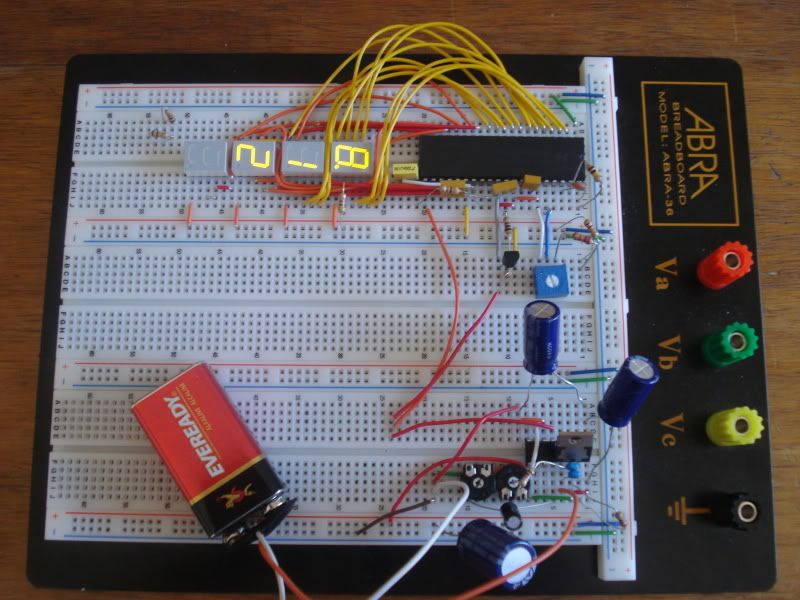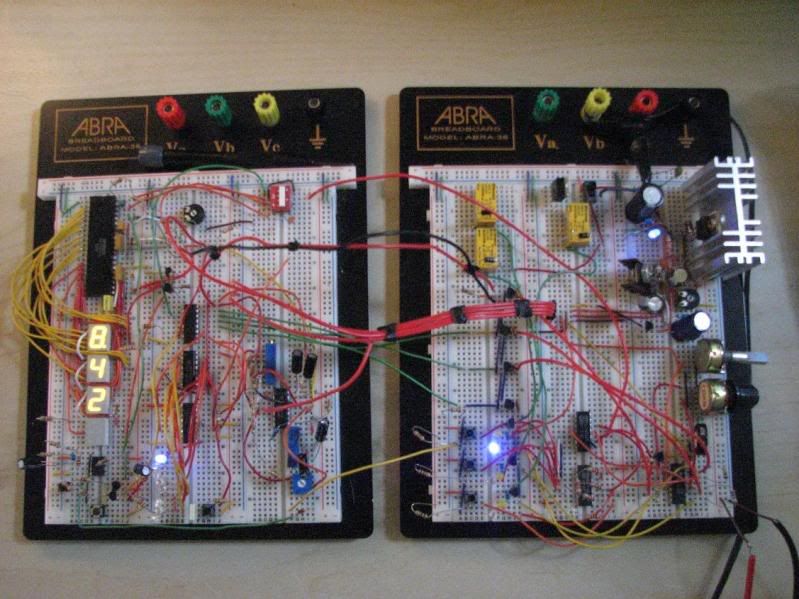Here's the original topic: viewtopic.php?t=63101
I've redesigned the entire circuit almost 4 times now, and added loads of new features. Currently (as of yesterday) I'm prototyping and testing the circuit section by section... starting with the digital thermometer:

The board the circuit is built on is called breadboard. Basically, it's a super easy way to build and test temporary electronic circuits, and can then be pulled apart later. Just to note: the display is reading 21.8 degrees Celsius; the way the breadboard is designed forced me to cascade them vertically. In the final version they won't be like that.
Here's a close up of the display:

And finally... a close up of the 'chip' (or integrated circuit) that's doing the majority of the work:

I forgot to take a pic of it... but the sensor itself is the tiny black dot beside the blue square with the white circle
The final product will be a digital thermometer, digital humidity meter, and (hopefully) digital pH meter as well. The circuit will be capable of turning heaters and water misters on or off in order to maintain specific conditions, and automatically control the lighting, starting dim in the morning, bright midday, then becoming dimmer again towards nightfall.
More updates to come!!





